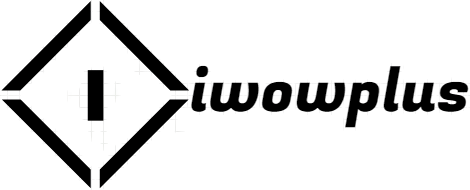We explain what breathing is and why we breathe. Also, how is the breathing process and what happens to the cells when breathing.
 |
| What is breathing? |
Breathing is a biological process typical of living beings, whose objective is to keep their organism active (therefore, alive) through the exchange of carbon dioxide for oxygen.
Breathing is commonly known as the process by which we inhale air, but that is only the manifestation of the respiratory system whose process is even more complex, where the true beneficiaries are the cells of organisms, in the so-called cellular respiration.
In order for aerobic living beings to keep their vital functions active, they need this process consisting of oxygen consumption and the expulsion of carbon dioxide (CO2). Depending on the species and the place where they live, they can acquire this vital element (O) through air or water, by means of a pulmonary, gill, cutaneous or tracheal system.
After oxygen has fulfilled its objective within the system, what is returned to the environment, as waste, is carbon dioxide. Another element, which for other organisms such as plants is vital. so we are constantly in an exchange in the ecosystem.
Why do we breathe?
As we indicated earlier, this process is essential to keep aerobic species alive and this is achieved by maintaining the body's metabolism.
From the nose to the lungs and in general, all the organs that make up the respiratory system, are responsible for capturing oxygen and bringing it to the body. This will allow, for example, to oxygenate the blood or synthesize sugars for energy. All cellular tissues require oxygen to carry out their functions.
reathing process
Breathing - Meditation
In exhalation, or exhalation, the air and its wastes are expelled.
The breathing process has three rhythms, which are mentioned below, but as for the biomechanics of oxygenation there are only two, inspiration and expiration.
- Inspiration: Also known as inhalation. It is the moment where the air is brought from the outside to the inside of the organism, through the nose, nasal cavity, mouth, trachea, larynx and pharynx. What happens here is that the rib cage expands and in turn the diaphragm descends, generating enough space for the lungs to fill with air. Here the variations between the following pressures have an important function: pleural, alveolar and transpulmonary.
- Pause: Instant that remains in the air.
- Expiration: Or also called exhalation. It is the process of expulsion of the air and its wastes (or what is not required in the body such as carbon dioxide), where the diaphragm and ribs return to their place, the muscles that retreated in inspiration relax causing The air is expelled from the lungs.
What happens to the cells when we breathe?
The process by which cells and, therefore, tissues, capture oxygen carried to the body, is called tissue respiration, where blood delivers O through the cell membrane and CO2 is returned, in addition to steam from Water.
This exchange happens when cells are surrounded by oxygenated blood. This process occurs every time it is inspired and exhales. Tissue respiration consumes about 80% of oxygen, which is where more energy is used throughout life.
What is the respiratory system?
It is known as respiratory system or respiratory system to all organs and ducts of the body of living beings that allow them to exchange gases with the environment where they are. In that sense, the structure of this system and its mechanisms can vary greatly depending on the habitat in which you live.
The name of the system comes from the fact that it allows breathing: the entry of air into the body of animals, from which oxygen is extracted, and the subsequent expulsion of carbon dioxide (CO2) whose presence in the body would be harmful.
In this sense, the respiratory system is complemented with the circulatory system, since the latter carries oxygen in the blood to the ends of the body and returns CO2 to the lungs to prevent it from modifying the body's pH. Breathing consists of two stages: inhalation (air inlet) and exhalation (air outlet).
Unlike humans, certain animals have respiratory systems that do not involve lungs, but gills to breathe underwater or skin breathing mechanisms (through the skin).
Functions of the respiratory system
The respiratory system allows the expulsion of carbon dioxide.
The elementary function of the respiratory system is, as the name implies, breathing or ventilation. This is, as we explained earlier, the entry into the body of a volume of air from the atmosphere, from which oxygen will be passively extracted, an essential element for the oxidation of glucose that gives energy to our body.
And at the same time, the system allows the expulsion of carbon dioxide resulting from said process.
Bodies of the respiratory system
The larynx connects the pharynx with the trachea and lungs. The respiratory system of the human being is composed of the following parts:
- Nostrils. The holes in the nose, where everything starts. For them penetrates the air, filtered by a series of mucosal villi and preventing access to solid waste and other non - gaseous elements.
- Pharynx. The connection between the nostrils, oral cavity and esophagus and larynx contains mucosal defensive is located in the neck.
- Larynx. Duct that connects the pharynx with the trachea and lungs, and in which are both the vocal cords, as the glottis (bell) and a series of muscles that in case of obstruction act by reflex clearing the path.
- Windpipe. The final stretch of the duct, which connects the larynx and lungs. It has a set of C-shaped cartilages that keep the duct open to external compression.
- Lungs. The main organs of respiration are two large sacs that are filled with air and allow the gaseous exchange between air and blood. For this, they have bronchial tubes (air ducts to the bronchioles), bronchioles (narrower ducts between the bronchi and the alveoli) and finally, the pulmonary alveoli (even narrower ducts, with a single-celled wall, which allows oxygen to pass through the blood).
- Intercostal muscles. A series of muscles in the chest that mobilize it during breathing.
- Diaphragm. The muscle that separates the abdomen from the thorax is responsible for inhalation and exhalation: it contracts and falls, expanding the rib cage. Then he relaxes and climbs, compressing the lathe and throwing out the air.
- Pleura. A serous membrane that covers the two lungs and that maintains a cavity between its two layers (internal and external), whose pressure is less than that of the atmosphere, to allow the expansion of the lungs during inhalation.
Diseases of the respiratory system
Lung cancer is very common in smokers. The respiratory system is susceptible to diseases such as:
- Cancer. Due to the recurring presence of toxic gases dissolved in the atmosphere in the lungs, when not from the smoke inhaled by smokers (and those around them), it is possible to develop malignant tumors in the lungs.
- Colds. The most common disease of the respiratory tract, is due to the presence of viruses in the upper (external) stages of the system, so they are fought by the mucous membranes through sneezing, secretions, fever, etc.
- Infections. The presence of bacteria in the respiratory tract, either in the upper stages (pharyngitis, laryngitis) or in the lungs (pneumonia or pneumonia) usually requires treatment with antibiotics and rest, as it causes fatigue and decreased breathing efficiency.
- Chronic Obstructive Pulmonary Disease (COPD). Very common among smokers and mining workers, it is a disease in which the alveolar ducts of the lungs are progressively obstructed and usually irreversible, leading to a loss of respiratory capacity and dramatically shortening life.






0 Comments